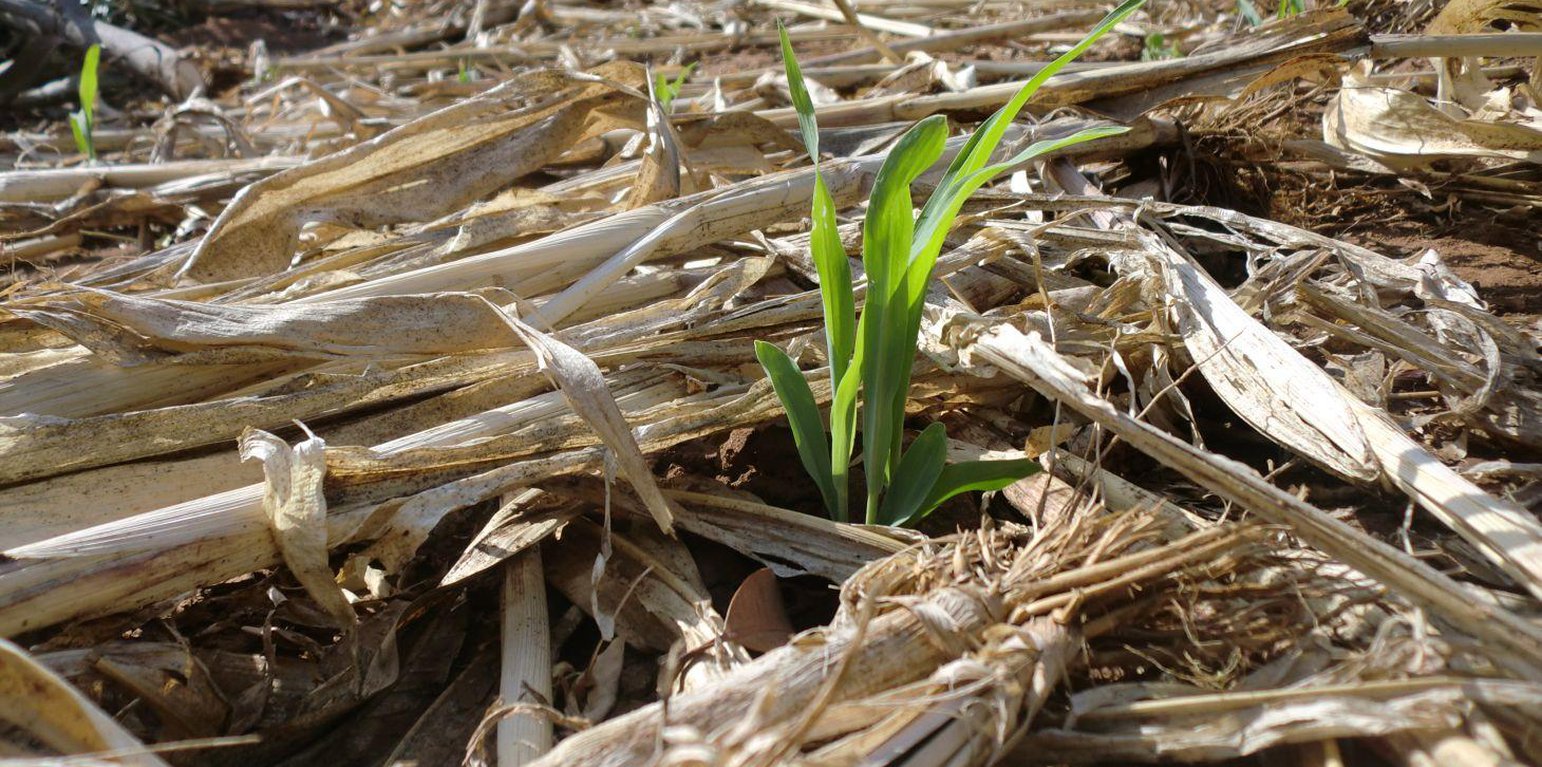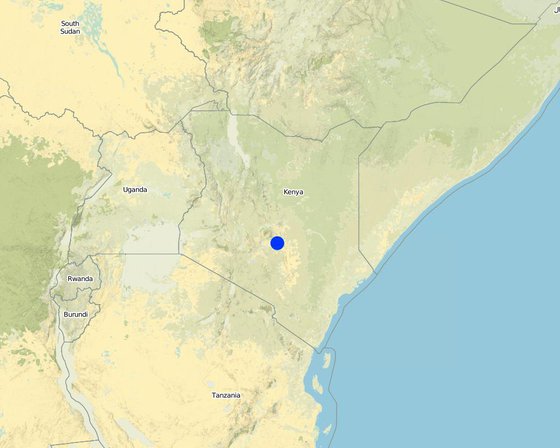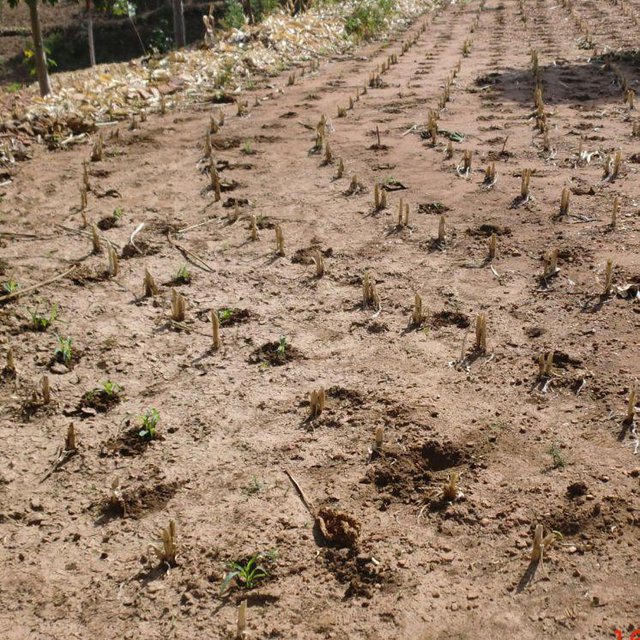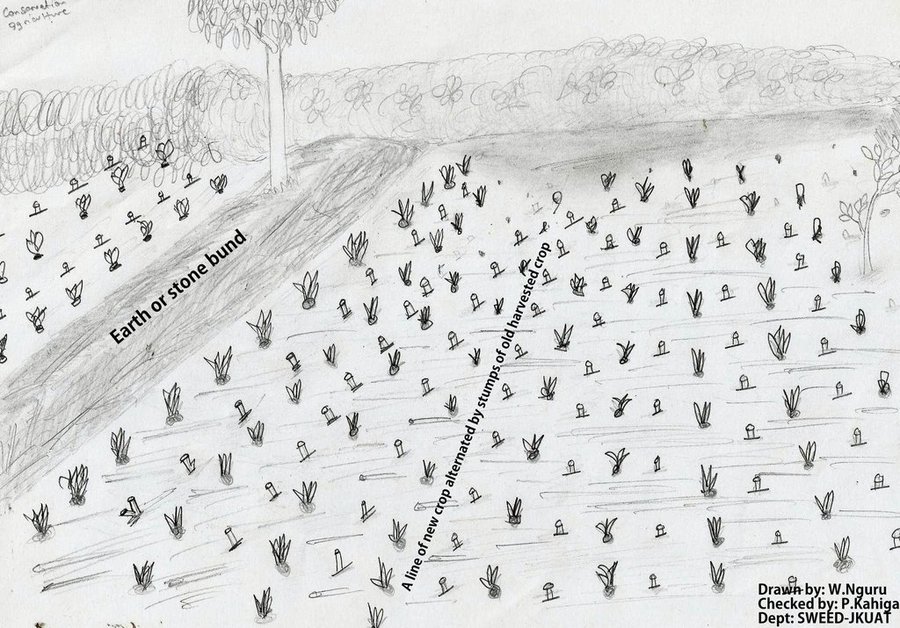



Conservation Agriculture (CA) is an approach to managing agro-ecosystems for improved and sustained productivity, increased profits and food security while preserving and enhancing the resource base and the environment. Conventional "arable" agriculture is normally based on soil tillage as the main operation. The technology is mainly practiced in the dry areas of Mbeere District where farmers experience very dry spells in most times of the year.
Purpose of the Technology: Conservation agriculture (CA) aims to achieve sustainable and profitable agriculture and subsequently aimes at improved livelihoods of farmers through the application of the three CA principles: minimal soil disturbance, permanent soil cover and crop rotations. CA holds tremendous potential for all sizes of farms and agro-ecological systems, but its adoption is perhaps most urgently required by smallholder farmers, especially those facing acute labour shortages. It is a way to combine profitable agricultural production with environmental concerns and sustainability and it has been proven to work in a variety of agroecological zones and farming systems.
Establishment / maintenance activities and inputs: The first key principle in CA is practicing minimum mechanical soil disturbance which is essential to maintaining minerals within the soil, stopping erosion, and preventing water loss from occurring within the soil.The second key principle in CA is much like the first in dealing with protecting the soil. The principle of managing the top soil to create a permanent organic soil cover can allow for growth of organisms within the soil structure. This growth will break down the mulch that is left on the soil surface. The breaking down of this mulch will produce a high organic matter level which will act as a fertilizer for the soil surface.The third principle is the practice of crop rotation with more than two species.Crop rotation can also help build up soil infrastructure. Establishing crops in a rotation allows for an extensive buildup of rooting zones which will allow for better water infiltration.
Natural / human environment: CA principles are universally applicable to all agricultural landscapes and land uses with locally adapted practices. CA enhances biodiversity and natural biological processes above and below the ground surface. Soil interventions such as mechanical soil disturbance are reduced to an absolute minimum or avoided, and external inputs such as agrochemicals and plant nutrients of mineral or organic origin are applied optimally and in ways and quantities that do not interfere with, or disrupt, the biological processes.

Location: Mbere South District, Eastern Province, Kenya
No. of Technology sites analysed:
Spread of the Technology: evenly spread over an area (approx. < 0.1 km2 (10 ha))
In a permanently protected area?:
Date of implementation:
Type of introduction




| Specify input | Unit | Quantity | Costs per Unit (Kshs) | Total costs per input (Kshs) | % of costs borne by land users |
| Labour | |||||
| Labour | ha | 1.0 | 50.0 | 50.0 | 100.0 |
| Equipment | |||||
| Tools | ha | 1.0 | 15.0 | 15.0 | 100.0 |
| Plant material | |||||
| Seeds | ha | 1.0 | 50.0 | 50.0 | 100.0 |
| Fertilizers and biocides | |||||
| Biocides | ha | 1.0 | 20.0 | 20.0 | 100.0 |
| Total costs for establishment of the Technology | 135.0 | ||||
| Total costs for establishment of the Technology in USD | 1.35 | ||||
| Specify input | Unit | Quantity | Costs per Unit (Kshs) | Total costs per input (Kshs) | % of costs borne by land users |
| Labour | |||||
| Labour | ha | 1.0 | 30.0 | 30.0 | 100.0 |
| Equipment | |||||
| Tools | ha | 1.0 | 50.0 | 50.0 | 100.0 |
| Plant material | |||||
| Seeds | ha | 1.0 | 20.0 | 20.0 | 100.0 |
| Fertilizers and biocides | |||||
| Biocides | ha | 1.0 | 20.0 | 20.0 | 100.0 |
| Total costs for maintenance of the Technology | 120.0 | ||||
| Total costs for maintenance of the Technology in USD | 1.2 | ||||